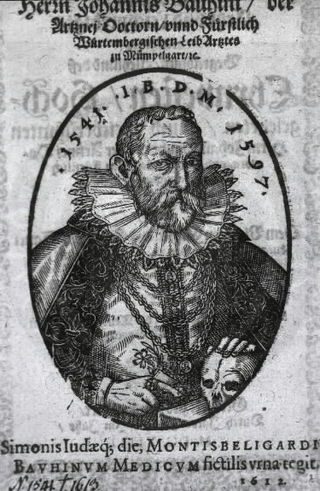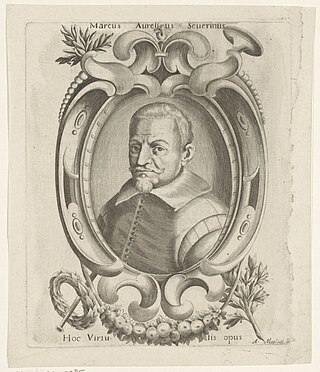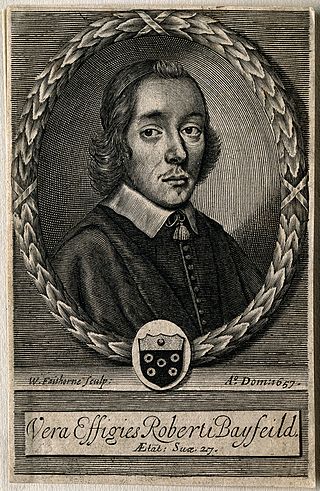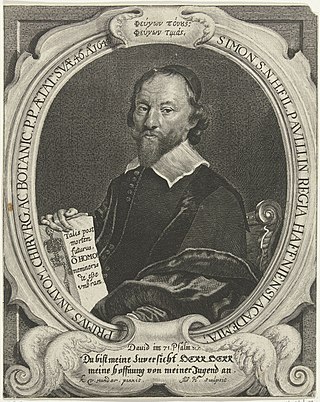Related Research Articles
The year 1813 in science and technology involved some significant events, listed below.
The year 1774 in science and technology involved some significant events.
The year 1715 in science and technology involved some significant events.
The year 1619 in science and technology involved some significant events.
The year 1614 in science and technology involved some significant events.

JohannBauhin was a Swiss botanist, born in Basel. He was the son of physician Jean Bauhin and the brother of physician and botanist Gaspard Bauhin.
Pierre Attaingnant or Attaignant was a French music publisher, active in Paris. He was one of the first to print music by single-impression printing, greatly reducing the labor involved, and he published music by more than 150 composers.
Eliben Joseph Chabillo was a Spanish philosopher who lived in Monzón, Aragon, in the second half of the fifteenth century.
John Rutty (1697–1775) was a Dublin Quaker physician and naturalist born in Melksham, Wiltshire, England. He was the author of many texts including A methodical synopsis of the Mineral Waters of Ireland (1757) and An Essay towards the Natural History of the County of Dublin (1772). After his death his spiritual diary was published, and the botanist William Henry Harvey named the genus Acanthaceae Ruttya after him.
The decade of the 1530s in music involved some significant events, publications, compositions, births, and deaths.
The year 1523 in science and technology included many events, some of which are listed here.

Marco Aurelio Severino was an Italian surgeon and anatomist.

Ignace-Gaston Pardies was a French Catholic Jesuit priest and scientist.
The Galenic corpus is the collection of writings of Galen, a prominent Greek physician, surgeon and philosopher in the Roman Empire during the second century CE. Several of the works were written between 165–175 CE.
The year 1530 in science and technology included many events, some of which are listed here.
Baldo Angelo Abati was an Italian physician and naturalist. He lived in the second half of the sixteenth century.

Robert Bayfield, was an English physician.

Simon Paulli, was a Danish physician and naturalist. He was a professor of anatomy, surgery and botany at the University of Copenhagen. The genus Paullinia is named after him.
Friedrich Bernhard Albinus or Frederik Bernard Albinus was a Dutch anatomist. He was the fourth and youngest son of Bernhardus Albinus, and succeeded his brother Bernhard Siegfried Albinus (1697–1770) at the University of Leiden as professor of anatomy.